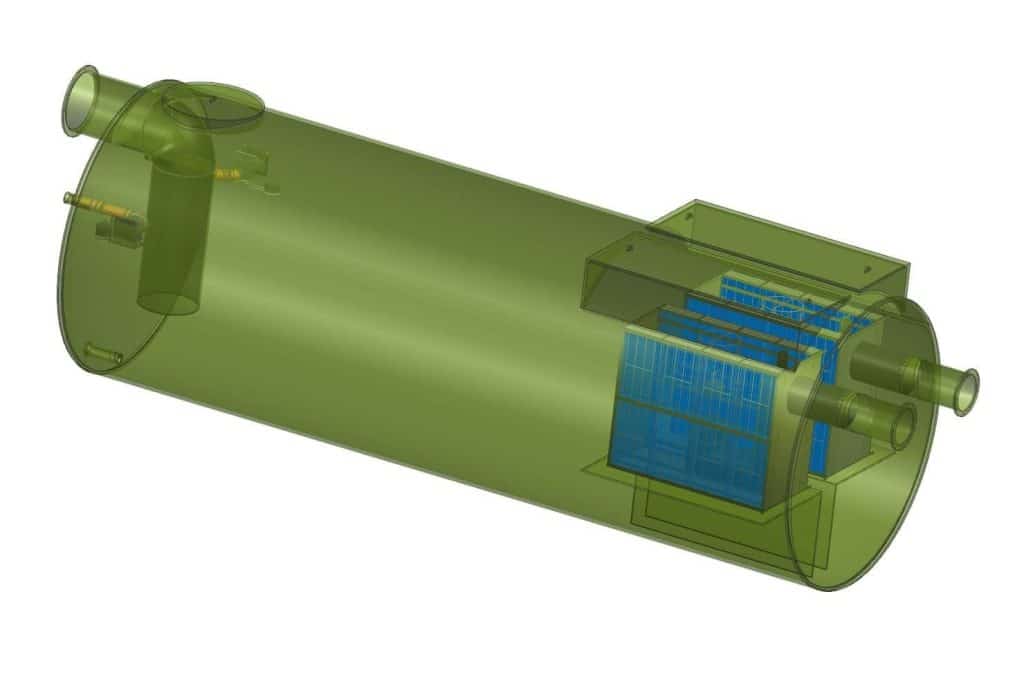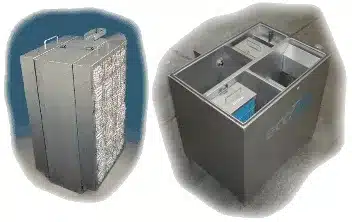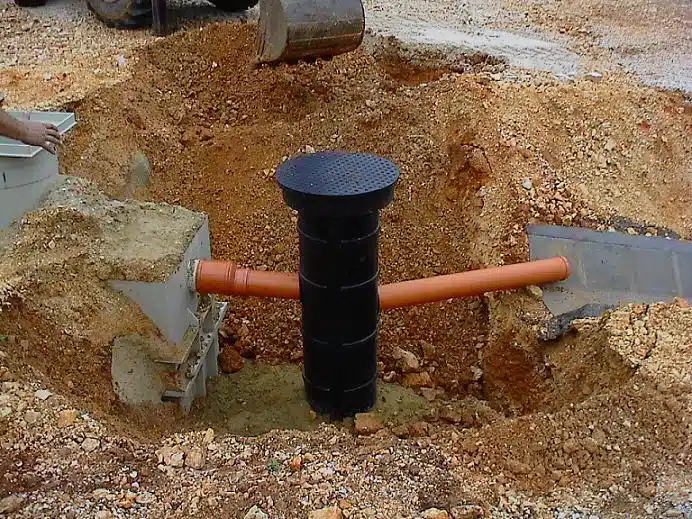Do you know about the hidden protectors of South Carolina’s waterways? Freytech Inc. South Carolina Below Ground Oil Water Separators are key to keeping our water safe. They work hard under our feet, stopping harmful pollutants from getting into our water.
In South Carolina, we take care of our environment by using these separators widely. They are crucial for cleaning stormwater and following environmental laws. From big industrial sites to business places, these separators take out oil and other bad stuff from wastewater before it gets to our water.
These separators meet strict standards like UL 58 and UL 1746 for lasting and effective use. They use science from Stokes Law and API Bulletin No. 421 to make sure they work well. This makes them a must-have for many places in South Carolina.
Key Takeaways
- Below ground oil water separators are key for protecting South Carolina’s environment.
- They are vital for cleaning stormwater and following environmental laws.
- Separators are made to last and work well, following UL 58 and UL 1746 standards.
- The technology relies on Stokes Law and API Bulletin No. 421 for the best results.
- Underground separators are used a lot in industrial and business areas.
Understanding Below Ground Oil Water Separators in South Carolina
Oil water separators are key in South Carolina for managing wastewater. They work by removing contaminants from water streams. This is important for keeping water clean.
Definition and Purpose
These devices are used for industrial wastewater treatment in South Carolina. They use gravity to separate oil and solids from wastewater. This keeps our water clean and protects the environment.
Regulatory Compliance in South Carolina
South Carolina has strict rules for wastewater management. Oil water separators help businesses follow these rules. They make sure the wastewater has very little oil in it.
Environmental Benefits
Using oil water separators helps protect the environment in South Carolina. They stop oil from getting into water, which is good for nature. This means cleaner water for people and animals.
Design and Construction of Underground Oil Water Separators
Underground oil water separators are key in preventing oil spills in South Carolina. They are built to follow strict stormwater rules and support sustainable development. The making of these separators uses top-quality materials and cutting-edge design.
They are made from carbon steel that meets ASTM A36 standards. Skilled welders make sure the tanks are airtight, following AWS D1.1 guidelines. The separators have flanges, manways for easy access, and lifting lugs for simple installation.
The separator’s main part is its separation chamber. Inside, coalescing media removes 99.9% of free oil droplets. This is crucial for meeting South Carolina’s tough environmental rules. A sludge chamber keeps solids out of the clean water, making sure the separator works well.
To fight corrosion and make them last longer, these separators get special coatings. This coating is key for keeping them effective in different weather conditions. The design aims for durability, efficiency, and following local laws.
These separators play a big role in preventing oil spills and managing stormwater in South Carolina. They are a key part of the state’s efforts towards sustainable development.
South Carolina Below Ground Oil Water Separators: Installation Process
Installing Below Ground Oil Water Separators in South Carolina requires skill and care. It makes sure we follow environmental rules and manage wastewater well. Let’s look at the main steps for putting in these separators in South Carolina.
Site Preparation
First, the site must be prepared carefully. This means checking the area, marking where utilities are, and removing any blocks. The ground is made level and strong to hold the separator’s weight. Getting the site ready right is key for the system to last long and work well.
Excavation and Placement
Then, the site is dug to the right depth and size. The separator is put into the hole with special equipment. It’s placed just right to work best, then made level and fixed down.
Connection to Existing Systems
After setting it up, the separator connects to the current wastewater system. This includes linking up the pipes, pumps, and controls if needed. Then, the system is tested thoroughly to make sure it works right and follows South Carolina’s environmental laws.
Getting experts to install Below Ground Oil Water Separators is vital in South Carolina. It helps keep the environment safe and shields your business from legal trouble.
Performance and Efficiency of Freytech Inc. Separators
Freytech Inc. is a leader in wastewater management in South Carolina. Their advanced oil water separators are key to efficient industrial wastewater treatment in the state. These systems set high standards for efficiency and protect the environment.
Enhanced Coalescing Technology
Freytech Inc. uses the latest coalescing technology in their separators. This technology ensures better separation of oil from water. It leads to cleaner discharge and helps meet environmental laws.
Separation Efficiency Rates
The separators from Freytech have high separation efficiency rates. They achieve a 5 PPM separation efficiency, which is above the North American standard of 10 PPM. For trace amounts of emulsified oil, they can get down to 0.1 PPM efficiency.
Hydrocarbon Discharge Limits
Freytech Inc.’s separators meet strict hydrocarbon discharge limits. They can separate various hydrocarbons like motor oil, diesel, and gasoline. This makes them perfect for industrial wastewater treatment in South Carolina. It helps businesses follow tough environmental standards.
These separators are crucial in storm water systems. They process runoff to meet the US EPA’s Clean Water Act standards. With effective oily water treatment, facilities protect the environment and dodge big fines.










